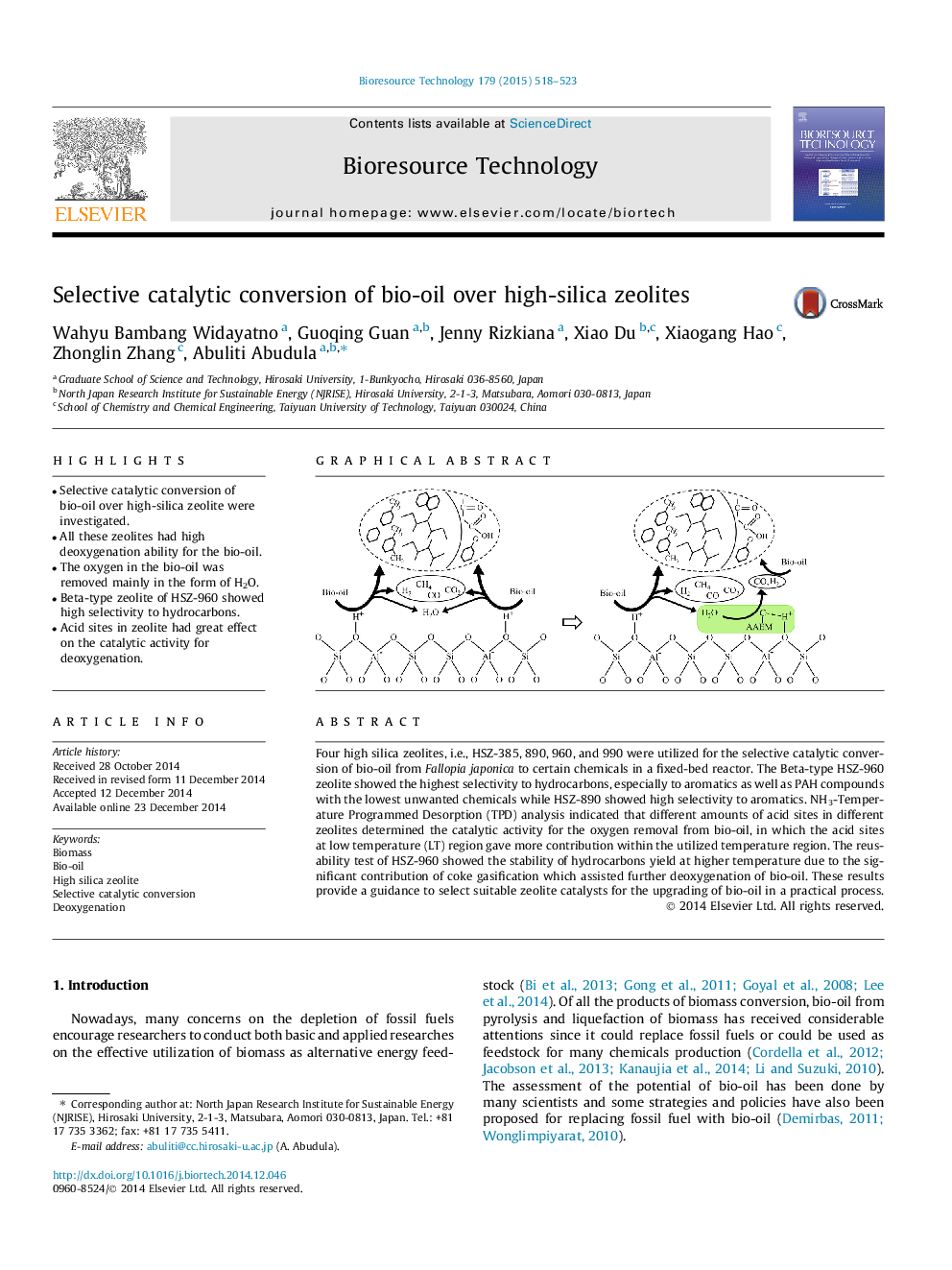| Article ID | Journal | Published Year | Pages | File Type |
|---|---|---|---|---|
| 680190 | Bioresource Technology | 2015 | 6 Pages |
•Selective catalytic conversion of bio-oil over high-silica zeolite were investigated.•All these zeolites had high deoxygenation ability for the bio-oil.•The oxygen in the bio-oil was removed mainly in the form of H2O.•Beta-type zeolite of HSZ-960 showed high selectivity to hydrocarbons.•Acid sites in zeolite had great effect on the catalytic activity for deoxygenation.
Four high silica zeolites, i.e., HSZ-385, 890, 960, and 990 were utilized for the selective catalytic conversion of bio-oil from Fallopia japonica to certain chemicals in a fixed-bed reactor. The Beta-type HSZ-960 zeolite showed the highest selectivity to hydrocarbons, especially to aromatics as well as PAH compounds with the lowest unwanted chemicals while HSZ-890 showed high selectivity to aromatics. NH3-Temperature Programmed Desorption (TPD) analysis indicated that different amounts of acid sites in different zeolites determined the catalytic activity for the oxygen removal from bio-oil, in which the acid sites at low temperature (LT) region gave more contribution within the utilized temperature region. The reusability test of HSZ-960 showed the stability of hydrocarbons yield at higher temperature due to the significant contribution of coke gasification which assisted further deoxygenation of bio-oil. These results provide a guidance to select suitable zeolite catalysts for the upgrading of bio-oil in a practical process.
Graphical abstractFigure optionsDownload full-size imageDownload as PowerPoint slide
